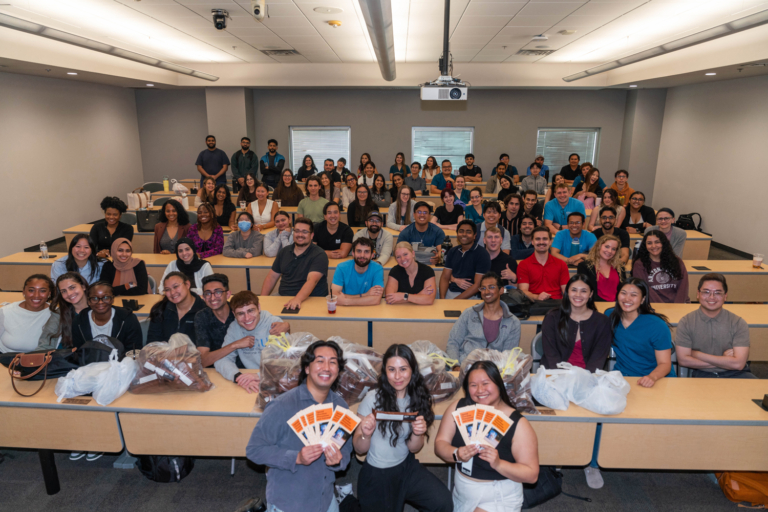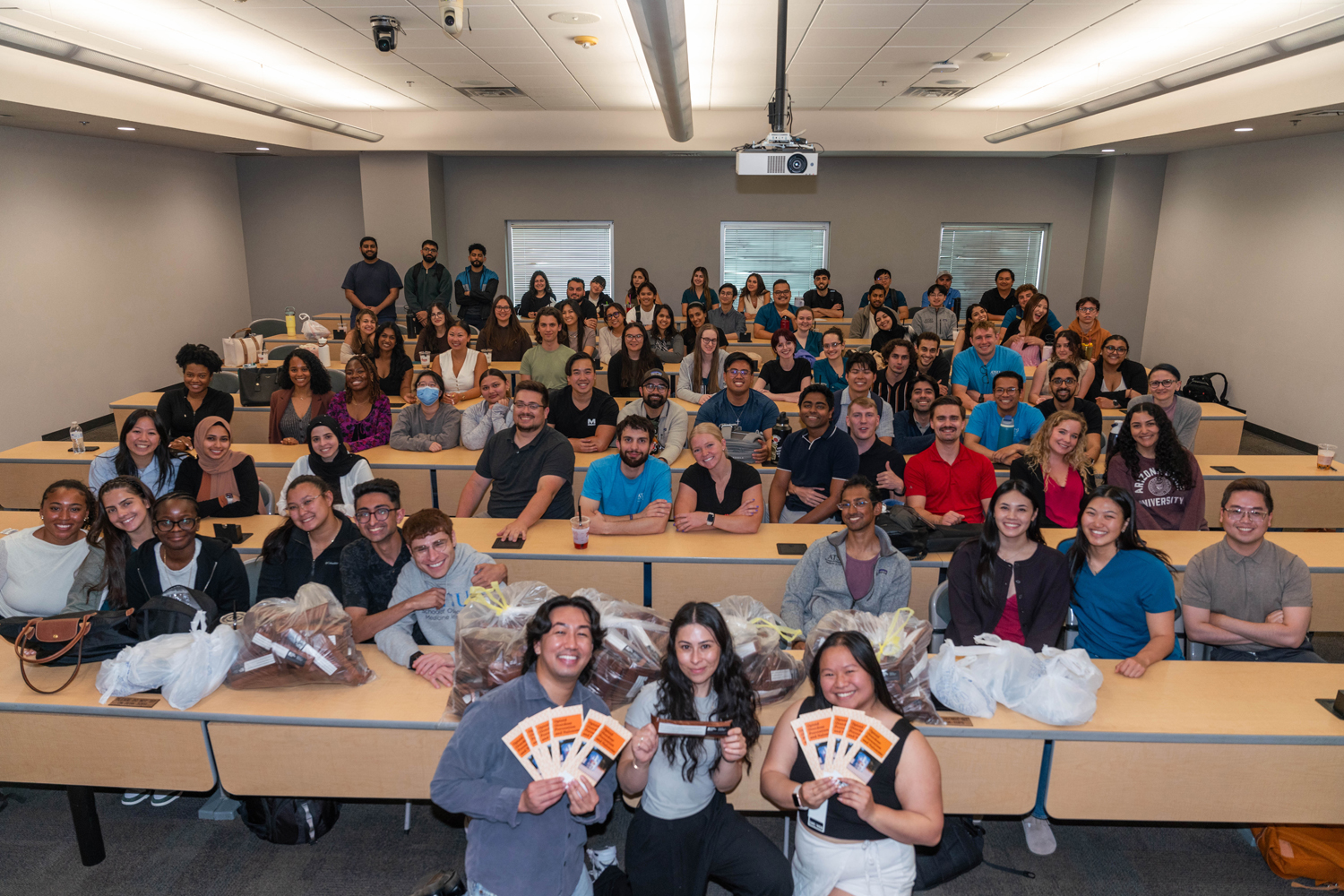ATSU’s Harm Reduction Club continuing to serve vulnerable communities
Posted: April 11, 2025
Founded in 2021, A.T. Still University’s (ATSU) Harm Reduction Club is making a positive impact throughout the Phoenix area through the implementation of harm reduction practices. The club, dedicated to raising awareness and providing resources to vulnerable populations, has significantly expanded its outreach efforts this year, and students are looking forward to seeing what’s to come.
“With over 800 safety needle kits and naloxone kits created by ATSU’s Harm Reduction Club, this year’s goals are to actively raise awareness about harm reduction practices and to serve our community members through volunteering and increasing access to healthcare,” said club president and ATSU-School of Osteopathic Medicine in Arizona (ATSU-SOMA) student Helen Dang, OMS I.
“Working closely with Shot in the Dark, we have our club members volunteering their time handing out sterile needles and naloxone kits to people who use drugs. In doing so, actively using harm reduction principles to save a life,” Dang added.

Through a newly focused collaboration with Midwestern University’s Arizona College of Osteopathic Medicine, club members are also using osteopathic manipulation skills to serve unhoused community members in central Phoenix.
Dang explained, “In this activity of community service, we are directly using our clinical skills to improve a patient’s life. We strive to start the very first student-run street medicine program, to weave harm reduction into clinical practice, while also advocating for harm reduction education into medical education.”
Additionally, through a collaboration with HR Reach, an organization run by medical students and pre-medical undergraduate students passionate about harm reduction education, advocacy, and collaboration in healthcare, members have the opportunity to get involved with medical students across the nation.
Through these collaborations, ATSU’s Harm Reduction Club is not only addressing immediate community needs but also working toward long-term change in medical education and practice.

